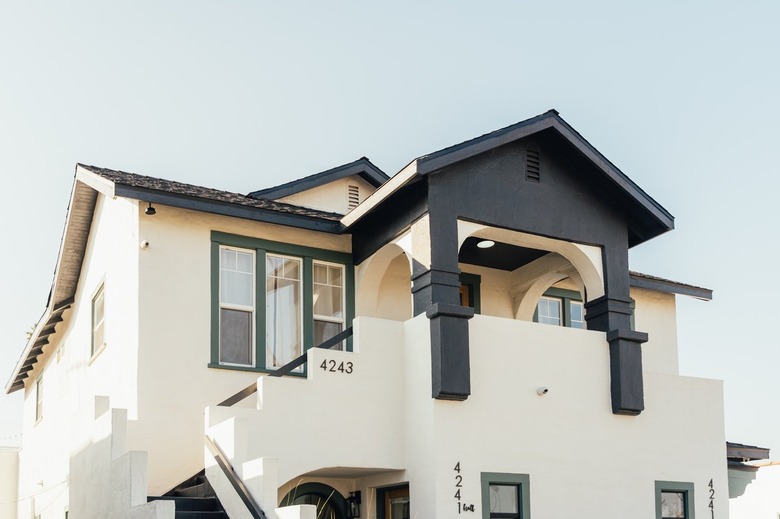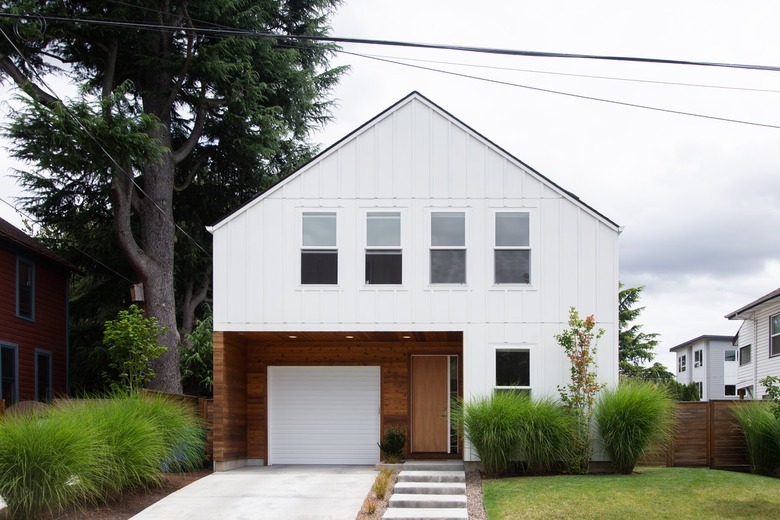How Much Down Payment Is Required On A House?
Most homebuyers do not have the cash in hand to purchase a home outright. Rather, they must save enough for a down payment on a house and rely on bank loans to cover the lion's share of the purchase. But how much down payment is required varies widely among lenders. You may have heard that you need a down payment of 20 percent of the purchase price to get a home loan, but don't take that as gospel. Very few first-time homebuyers put down 20 percent on their first purchase.
Getting ready to buy a house? Here's everything you need to know about down payments — including how much you need and what happens when you don't have a down payment of 20 percent.
What Is a Down Payment?
What Is a Down Payment?
Anyone who is considering buying a home will need to understand the concept of a down payment. This is a sum of money that someone buying a home must pay up front in cash as part of the purchase. The purchaser borrows money to finance the remainder of the purchase price, which is better known as a mortgage loan. The homebuyer pays back the mortgage amount with interest over time in monthly installments.
The terms of the mortgage, including the type of mortgage, the amount of the down payment, the mortgage rate of interest, and the period of repayment, vary from loan to loan. These factors often depend to some extent on the credit history and credit scores of the borrowers.
Minimum Down Payment Requirements
Minimum Down Payment Requirements
Although you may hear that a minimum down payment of at least 20 percent of the purchase price is required in real estate transactions, this is far from a universal rule. Depending on the circumstances of the borrower and the type of loan product involved, lenders may mandate down payments as low as 0 percent or as high as 50 percent.
Some types of loans require a much smaller amount of cash down. However, a loan permitting a down payment of under 20 percent will usually require the buyer to purchase private mortgage insurance (PMI). PMI applies to conventional loans only. Mortgages of different types, such as those offered by the Federal Housing Administration, require their own specific mortgage insurance (for Federal Housing Administration loans, this is called a Mortgage Insurance Premium).
What Is Private Mortgage Insurance?
What Is Private Mortgage Insurance?
When a bank or financial institution lends money to a homebuyer, they consider the risks of default as part of the loan application. If a buyer can put down 20 percent, the lender considers the loan a lower-risk loan. A borrower who has significant cash invested in a purchase is considered less likely to default. And even if they do default, the mortgage lender will likely be able to recoup the other 80 percent by foreclosing on and selling the property.
However, when a homebuyer applies for a conventional mortgage but cannot afford a 20 percent down payment on a house, the loan is considered a riskier investment. To protect against a default risk, the lender will require that the homebuyer take out PMI to qualify for the mortgage if the loan-to-value ratio (amount of loan divided by value of the property) is under 80 percent.
How Is PMI Paid?
How Is PMI Paid?
PMI can be paid in several ways. It is most often paid monthly and included in the monthly mortgage the borrower pays the lender. However, sometimes PMI is paid up front during closing as part of the closing costs. PMI costs range from 0.4 percent to 2.25 percent of the mortgage annually.
PMI doesn't usually last for the term of the loan. Rather, the lender drops the requirement once your mortgage balance is down to 78 percent of the original purchase amount.
Tip
You don't have to wait for the lender to drop the PMI requirement. You can either refinance your home or get an appraisal (assuming property values have risen in your area) to prove to your lender that you owe less than 80 percent of the home's value.
Advantages of a Bigger Down Payment
Advantages of a Bigger Down Payment
Some buyers believe that it is to their benefit to put down as much as possible in a down payment, while others try to keep the down payment as low as possible. Obviously, a borrower who does not have the down payment amount cannot offer 20 percent, but those who do should consider the advantages of putting down more money up front in a larger down payment amount.
One advantage to paying more of a home's purchase price up front in a larger down payment is avoiding PMI payments. While an annual PMI cost of between 0.4 percent and 2.25 percent of the mortgage loan may not sound like much, it actually adds up to a tidy sum. For example, if a homebuyer gets a $200,000 loan and a midrange PMI fee of 1 percent, it would cost the borrower about $2,000 a year. That is a $166 fee each month that is added into the monthly mortgage payment.
But that's not the only advantage to putting down a sizeable down payment when you first venture into homeownership. Here are a few others to keep in mind.
- The amount of the mortgage loan is less with a higher down payment. That means that monthly mortgage payments will be less.
- The lower mortgage loan means lower interest payments over the term of the loan, increasing the affordability of a higher-priced home.
- The borrowers might qualify for a lower interest rate with more money down.
- A larger down payment can make it easier for the buyer to qualify for additional loans in the future if needed. The amount of the current mortgage loan impacts the buyer's debt-to-income ratio — a calculation used by lenders to determine eligibility for loans.
This ratio compares total monthly debt payments to gross monthly income.
Advantages of a Low Down Payment
Advantages of a Low Down Payment
The most obvious advantage to a low down payment is the fact that the homebuyers do not have to front as much money, but there are also other advantages:
- Planning on a lower down payment can mean you buy now, not five years from now when you've saved enough for 20 percent down. If the housing market in your area is hot, prices may get out of reach before you've saved enough.
- Everybody should have an emergency fund just in case something unexpected happens, like a medical issue. Putting every dime of savings into a down payment leaves an individual or family very vulnerable.
- If you invest too much of your free cash into the down payment, what about all those repairs and improvements you want to make on the new home? Cash on hand is absolutely required.
- Buying a home involves upfront costs other than just the down payment. Consider your closing costs, the possible need to pay points, and the cost of moving.
Loan Programs and Down Payments
Loan Programs and Down Payments
Different loan programs are available to assist buyers who cannot make the 20 percent down payment required on some conventional loans. Here are a few of the more common loan programs with low down payment options:
- FHA loans. First-time buyers or return buyers may qualify for the minimum Federal Housing Authority mortgage down payment of
3.5 percent. That payment option is only available for those with excellent credit (FICO) scores of 580 or higher. Those with FICO
scores between 500 and 579 must pay a down payment of 10 percent.
- VA direct loans. The Department of Veterans Affairs offers VA home loan programs to veterans to buy, build, or
improve a home or refinance their current home loan. These include a VA
direct loan to assist a veteran to buy a house at a competitive interest rate without a down payment in most cases. - VA-backed loans. In these loans, the Department of Veterans Affairs assists veterans who seek a loan from a private lender by guaranteeing part of the loan. Almost 90 percent
of VA-backed home loans are made without a down payment. - Conventional loans. The Conventional 97 mortgage is a low down payment home loan. In this loan program, first-time buyers (that is, those who have not owned a home in the past three years) can get loans of $417,000 or less with only 3 percent down. The property must be an owner-occupied single unit home or condo. These are 30-year fixed loans, and PMI is required.
- Fannie Mae/Freddie Mac loans. The Federal National Mortgage Association, or Fannie Mae, is a government-sponsored loan program that gives mortgage lenders the cash needed to fund affordable-interest home loans. A borrower with a credit score of at least 620 can borrow up to $548,250 on a primary residence with a down payment of 3 percent of the loan amount. This down payment can be gifted to the borrower from family or friends.
A similar government-sponsored program called Home Possible Advantage mortgage, offered by Freddie Mac, is available to buyers with a credit score of 660.
Final Word on Down Payments
Final Word on Down Payments
Although some lenders give preference to new homebuyers with a down payment of 20 percent or more, most first-time buyers do not have this much cash. Fortunately, there are more than a few programs that offer eligible buyers a chance to buy a residence with a lower down payment.
In order to find your best deal, get an overview of the loan programs available and determine those for which you might qualify. There is very likely a program that would work for your circumstances.

